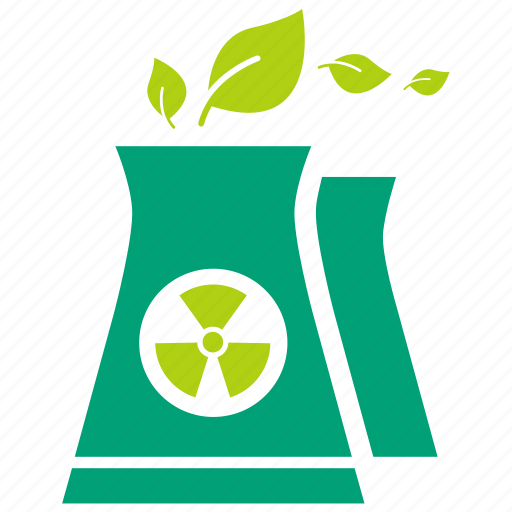Instead of opposing nuclear power, climate activists should be thronging the streets demanding a faster rollout.
Dubai, United Arab Emirates—“It’s been a very good COP for nuclear energy,” said Jonathan Cobb of the World Nuclear Association. He was referring to COP28, this year’s United Nations summit on climate change, which had given his industry several reasons for optimism. Most notably, 22 countries—including the United States, the U.K., France, Japan, and South Korea—had issued the ministerial Declaration to Triple Nuclear Capacity by 2050.
“COP28 will be known as the nuclear COP,” Australia’s shadow climate minister, Ted O’Brien, declared on one panel. And America’s climate envoy, former Secretary of State John Kerry, proclaimed when the declaration was announced that “you can’t get to net zero in 2050 without nuclear power.”
“Net zero” is the condition where the anthropogenic emissions of greenhouse gases are balanced by removal from the atmosphere—one of the targets set by the Paris Climate Change Agreement. Kerry noted that nuclear energy currently supplies a third of the world’s low-carbon electricity.
This increased recognition of nuclear energy as a climate-friendly power source builds on the progress I reported at last year’s climate summit in Egypt. The declaration recognizes that “nuclear energy is already the second-largest source of clean dispatchable baseload power, with benefits for energy security.” (Baseload means power generation that generally runs continuously throughout the year and operates at stable output levels. This contrasts with variable power sources, such as solar and wind: It isn’t always sunny or windy.)
The countries issuing the declaration also “commit to supporting the development and construction of nuclear reactors, such as small modular and other advanced reactors for power generation as well as wider industrial applications for decarbonization.” An example of those “wider industrial applications” would be the X-Energy small modular gas-cooled reactors Dow Chemical is using at its manufacturing plant on the Gulf Coast of Texas.
Another advantage of nuclear power plants is their relatively small size compared to the extensive and often remote areas needed to deploy wind and solar power. As Cobb pointed out, nuclear reactors can be slotted into the sites of decommissioned coal and natural gas power plants. The new nuclear power plants can run the already installed turbines and transmit the electricity they generate through already installed transmission lines. And the local communities are already set up to operate power plants.
As it happens, Terrapower announced earlier this year that it will build its advanced Natrium nuclear reactor near a retiring coal plant in Kemmerer, Wyoming.
All too predictably, various environmental groups at COP28 denounced the declaration. “Promoting a nuclear expansion at COP 28 is only a plan for climate failure,” asserted Tim Judson, head of the U.S.-based Nuclear Information and Resource Service, in a press release. Lise Masson of Friends of the Earth International added: “We have no time to waste on such false solutions that only delay and distract real and adequate action to address the climate crisis.”
These activists point out that it takes a long time to build a new reactor. Of course, these delays are largely the result of their own decades of support for crippling overregulation.
In a 2017 study in Energies, the Australian economist Peter Lang calculated that if the heavy regulation championed by anti-nuclear activists had not prevailed during the 1970s and '80s, nuclear power “could have replaced up to 100% of coal-generated and 76% of gas-generated electricity” globally by 2015. Had the earlier learning-curve trajectory been allowed to continue, nuclear power plant construction costs would be 10 percent of what they are now. This would have cut cumulative carbon dioxide emissions by 174 gigatons, and annual carbon dioxide emissions would now be one-third less.
About 440 nuclear reactors are operating now, with 60 more in construction and 110 more on the drawing boards. The goal of tripling nuclear energy production implies the construction of 880 new power plants by 2050. That would mean building an average of 34 new reactors every year from now til then.
Would that actually be enough? While nuclear power generates a significant amount of the world’s electricity, it supplies only about 5 percent of the world’s primary energy. Fossil fuels still account for around 80 percent of primary energy consumption. If you really want to cut greenhouse emissions over the course of this century, you’d need to increase the world’s nuclear capacity much more—tripling won’t be enough.
If climate activists were serious about addressing what they call the climate crisis, they would be thronging the streets demanding a more streamlined approval process, enabling a much faster nuclear-power rollout.
Removed by mod
I’m not familiar with Lang’s paper, but I know the German Greens for example have explicitly stated as much:
WELT: Das Hauptziel der Grünen war der sofortige Ausstieg aus der Atomenergie. Es hat dann doch etwas länger gedauert. Begann damit die Realpolitik?
Trittin: 1990 flogen wir West-Grünen aus dem Bundestag. Aber in Niedersachsen haben wir damals gewonnen, es kam zu einer rot-grünen Landesregierung mit Gerhard Schröder (SPD). Zwar mit einem schwachen Ergebnis, 5,5 Prozent – aber wir regierten. Uns war klar, dass wir Atomkraft nicht nur über Protest auf der Straße verhindern können. Daraufhin haben wir in den Regierungen in Niedersachsen und später in Hessen versucht, Atomkraftwerke unrentabel zu machen, indem man die Sicherheitsanforderungen hochschraubt. Das war nicht willkürlich, sondern fachlich geboten.
Translated:
WELT: The main goal of the Greens was to immediately phase out nuclear energy. It did take a little longer. Did this begin realpolitik?
Trittin: In 1990, we West Greens were thrown out of the Bundestag. But we won in Lower Saxony back then; a red-green state government was formed with Gerhard Schröder (SPD). Admittedly with a weak result, 5.5 percent – but we ruled.
It was clear to us that we couldn’t prevent nuclear power just by protesting on the streets. As a result, we in the governments of Lower Saxony and later Hesse tried to make nuclear power plants unprofitable by increasing safety requirements. This was not arbitrary, but technically necessary.
@Emil @Diplomjodler Given that no western country build a nuclear power plant on time and on budget in the last 25 years, that point is rather mood. Or it is simply true and regulations were indeed technically necessary in all those countries.
@Sweetshark @Emil @Diplomjodler
Regulations are necessary. But regulations can be implemented in ways that do not create arbitrary month-long delays for simple and standard engineering questions. Or you can do what Trittin described.
The problem is that the Greens /still/ have not cleaned up their priorities. Habeck last year was unable to affirm in an interview the direct question whether coal is worse for the environment than nuclear.
@Sweetshark @Emil @Diplomjodler
It’s almost funny to watch anti-nuclear rhethoric over the years. In the beginning it was »it’s unsafe, you’re just doing it for profit«, then »it’s dirty, you’re just doing it for profit«, and now that those points don’t hold up, it’s »it’s unprofitable, you’re just doing it for, uhmm…«.
Removed by mod
“Instead of opposing nuclear power, climate activists should be thronging the streets demanding a faster rollout.”
Couldn’t be more accurate 🎯
Why should climate activists listen to a libertarian lobbyist organisation that promotes getting rid of all environmental and emission regulations?





